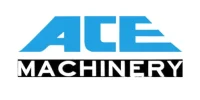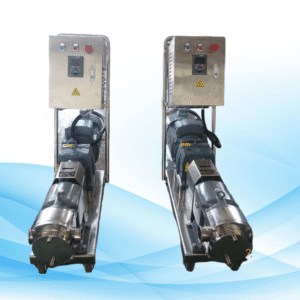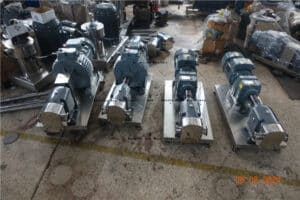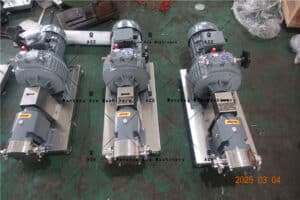Vacuum pumps are the linchpin in the majority of sectors
These devices assist in achieving a vacuum by the extraction of air and gas molecules from the confined space. Vacuum pumps have various applications in industries like manufacturing, healthcare, and food processing industries. The major three subdivisions of vacuum pumps are primary (Backing P) Pumps, Booster pumps, and Secondary (High Vacuum) P Pumps. Each category has different ranges of pressures and areas of usage. This is why it’s also important to know the features and benefits of each type of pump and their application to stay productive and efficient.
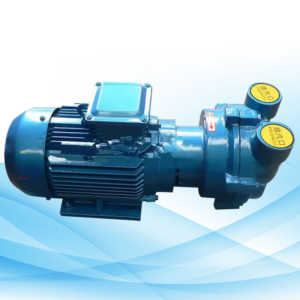
Primary (Backing) Pumps
Rotary Vane Pumps

Description and Functionality
Rotary pump designs and operation are characterized by a rotary mechanism installed in the pump casing. Inside the assembly, there are breakable plates that extend into sockets in the rotation casing. The rotation of the assembly creates a vacuum during pollution by hitting the air in and gas molecules into the vacuum cavity. The configuration guarantees a good degree of elimination of gases. Rotary vane pumps are very minimal noise or none at all and a perfect controllable perfect motion. These pumps have no limitations, recently reported. Replacement parts need to be incorporated in a timely manner to enhance service.
Applications and Advantages
Rotary vane pumps are very important for numerous industries. Such uses of these pumps in manufacturing include those of their encapsulation and their transportation. Lift off with these pumps is prevalent amongst their abnormal female consumers. The pumps are claimed, registered, and guaranteed to be effective. Consistency in operative performance is guaranteed even after prolonged exposure. Users are impressed with the small size and convenience of the pinch and drug delivery device.
Liquid Ring Vacuum Pumps
General Information and General Stages
Liquid ring vacuum pumps, as the name of the type suggests, make use of a liquid, typically water, for creating compression. That liquid remains inside the housing. The impeller rotates and creates a void. This procedure eliminates air and gas very well. The pumps with liquid rings work with wet and dry gases, without any difficulties. The construction of the pumps is simple and strong, at the same time.
Applications and Advantages
Liquid ring vacuum pumps stand out in food processing and water treatment, for instance. These types of pumps also deal well with large amounts of gas, without excessive waste. The pumps are resistant to extremes and chemical agents. Liquid ring pumps have very low maintenance needs. It should also be noted that upon using the pump, users will not be disturbed by a lot of noise, even during operations.
Diaphragm Pumps
General Information and General Stages
For diaphragm pumps to work properly, a vacuum must be created. An elastic diaphragm is included in the pump and positioned in such a way that it can swing back and forth. This action helps to push out air and gas molecular components. There is no need to use any oil with diaphragm pumps. The pumps are safe for aggressive and volatile chemicals. The design above allows the handling of the pumping process without any chances of getting the pump contaminated.
Applications and Advantages
Diaphragm pumps are used in chemical industries as well as in laboratories, making them quite versatile. These pumps successfully handle delicate and dangerous substances. The pumps promise a neat operation without any traces of oil. Diaphragm pumps do not concede any chemical capacity. The users turn favorable to the construct of the pump, which is aggressive but causes no aggression to the aggressive media.
Booster Pumps
Roots Pumps
Description and Functionality
Roots pumps have two lobes, and these lobes rotate in opposite directions. The rotary motion compresses and captures the air and gas molecules between the rotors and the body of the machine. The air trapped is screened from the inlet to the exhaust. It is noted that a roots vacuum pump takes in air and then gets rid of gas to create a vacuum. The configuration allows pumping activity to take place at a high velocity whilst maintaining low vacuum.
Applications and Advantages
Roots pumps are used in several industries, including but not limited to chemical processing and manufacturing of semiconductors. They can also manage a large amount of gas in a short time. Roots pumps are very efficient and reliable. The pumps work without the use of any oil, thereby making the processes clean. The users enjoy and benefit from less effort due to robust structures that require little maintenance.
Claw Pumps
Description and Functionality
Claw pumps have two claw rotors rotating in opposite directions. The claws in relative motion trap air or gas molecules in the areas situated between the claws. Movement of gas enclosure takes place within the pump towards the axial skeleton with the help of the rotating claws. As the claws compress and discharge the gas, a vacuum is formed. The construction makes it possible for non-contact working and thus minimal attrition.
Applications and Advantages
Claw pumps perform in industries such as pharmaceuticals and food packaging. Dry gases can also be handled adequately using these pumps. High efficiency and low energy use are hallmarks of these types of pumps. Minimum mechanical contact, which means less wear and tear over time, gives way to reduced maintenance. Users are presented with silent operations and compact design pumps.
Scroll Pumps
Description and Functionality
Scroll pumps consist of two opposing spiral-shaped scrolls that compress air or gas molecules. One of the scroll captures but does not revolve while the other performs a revolving action about it. This movement of compressing gas creates inflation pressure needed to establish a vacuum. These pumps do not require oil, making them desirable for clean environments. Their functioning is efficient without noise management.
Applications and Advantages
Scroll pumps serve industries such as scanning electronics and pharmaceuticals. These pumps deal with delicate operations and require high levels of hygiene. Scroll pumps give high reliability and require less maintenance. Due to the compact configuration, no unnecessary space is consumed, in laboratories or in production plants. Energy efficiency and long working lifetime are other advantages that users have appreciated.
Diffusion Pumps
Description and Functionality
Diffusion pumps are designed to isolate air and gas molecules with a jet of vaporized oil. The vapor jets urge the water molecules towards the inside of the pump and onto the pump walls. Water-cooled walls of the pump act like a condensate trap for the vaporized gases: these walls are cooled down and the vapor-trapped gases are cooled and condensed back into the liquid state. Operating, the water jets create a high vacuum. Built without moving components, diffusion pumps experience no mechanical action and wear.
Applications and Advantages
Vacuum systems support diffusion pumps, especially in electron and vacuum coats. Achieving ultra-low pressures that these pumps are able to function at is critical for performing delicate tasks. Constant efficiency of diffusion pumps remains with the passage of time. The strong build makes them resistant to stress in volatile situations. Users enjoy the cheap prices and the simplicity of installation of the new systems over the old ones.
Conclusion
The application of vacuum pumps is very beneficial amongst many industries. There is no vacuum pump type that does not have its own exceptional features and capabilities. Primary pumps create a vacuum chamber up to 3 tours. Secondary high vacuum pumps remove gases from the chamber inside only. Knowing your own parameters assists significantly in the proper choice of a particular type of pump. Think about the limits of pressure and application of these devices. Make a choice in line with your operational objectives. Selection is very important to ensure your processes are working well and effectively over a long period.
